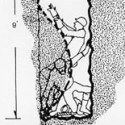|
Aardlof posted:Accidentally bought a PIC18F4450 instead of a PIC18F4550, but I can't find any code for this model and I can't get the drat thing to work. Check the configuration and make sure you have the oscillator set up properly. If MCLR is enabled in the configuration, either disable it or put a pull-up resistor on the MCLR pin.
|
|
|
|

|
| # ? Jun 11, 2024 15:32 |
|
BattleMaster posted:Check the configuration and make sure you have the oscillator set up properly. If MCLR is enabled in the configuration, either disable it or put a pull-up resistor on the MCLR pin. Changed MCLR from "OFF" to "ON" in the config, and now the inputs to turn on when the code tells them to. Thanks bro.
|
|
|
|
So, let's talk EL (Electroluminescent) wire: I recently picked up a bunch of EL Wire, as well as mini inverter and a "sequencer" from sparkfun.I was gonna use it for a costume, but I changed my mind, so I'm thinking of using it for a more long-term experimental project. However, two related problems come to mind: 1. I would like to be able to switch on multiple strands. However, when as the sum of the lengths of the wire I have connected at any given time changes, the brightness will change. This is undesireable. 2. I want to be able to accurately dim the wire, hopefully with at least 4 bits of resolution AFTER doing all the corrections. The first correction is to account for the fact that the brightness of the wire is unlikely to sale linearly with whatever variable I change (voltage, frequency, duty cycle, etc...), so unless that happens to counteract the other non-ideal effects, this needs some extra bits of actual resolution to fix. The second correction would be for the logarithmic response of the human eye to light. The third correction would be for the intrinsic brightness of each particular strand, either due to manufacturing differences, or more importantly in this case, color. With that out of the way, here is the issue: The inverter I'm using, I'm told, is based on some sort of mysterious resonant circuit. So, the frequency and the voltage will vary depending on the load. Depending on the source (since I can't find a reliable technical source), EL wire brightness relies on either frequency or voltage... The first issue i want to tackle is how to stabilize the brightness of the entire set of wires when i switch them on and off. The two solutions that seem apparent would either be to a) use an inverter that is not dependent on the load or b) compensate for the additional or removal of loads. The first might not be ideal, because that seems like it would be a lot less efficient, but I haven't even done any back-of-the-envelope calculations yet. The second idea would be based on having two different triac switches for each EL wire. One triac to actually switch the wire, and another with a dummy RC load attached, with values matched to the length of wire being switched. Still wasting power, but possibly less inefficient. As far as controlling the brightness, that's another issue...if I want to have individually controllable wires with one inverter, changing the frequency is out of the question. So, that leaves two options that i can think of--I can control the when the TRIACs are triggered (so, changing the duty cycle of the entire waveform) or I can simply control the duty cycle of the AC waveform (ie, on for N cycles, off for M cycles). The first is slightly messier, and I really haven't tried anything like this. The second would only work (well) for a high-frequency driver, so that there isn't flicker. However, I have no idea what the timescale of the persistence of the glow of the phosphors in the wires is. If it is sufficiently long, then even driving at a relatively low frequency might allow me to alter the duty cycle without flicker. This is almost entirely conjecture, since I'm really lacking professional documents on the subject. Any thoughts, team?
|
|
|
Slanderer posted:This is almost entirely conjecture, since I'm really lacking professional documents on the subject. Any thoughts, team? http://www.dorkbotpdx.org/blog/paul/el_wire_color
|
|
|
|
|
Delta-Wye posted:How bout some unprofessional documentation? No offense, but that's pretty much entirely unhelpful, since I'm trying to find out a better way to control the brightness of wire. What's going on here looks like a great way to (a) produce entirely too much DC and possibly damage the wire and (b) produce extra high frequency harmonics and decrease the lifespan of the wire.
|
|
|
|
I was thinking of the driver, actually. Can EL wire not take non-sinusoidal AC? Seems like that is a good driving circuit (assuming the provide square wave provides acceptable input for the EL wire) that would allow you to fix things like frequency, unlike your current driver. EDIT: The 'color changing' seemed dumb to me when I first saw this (I also can change LED colors by driving them with far too much current but that doesn't make it a good idea!), it was just the only driver I could remember seeing a schematic for.
|
|
|
|
|
I picked up one of these GSM modems because they're cheap and you can desolder the USB-serial chip inside them and get a raw serial interface that's easy to interface with a microcontroller. I've gotten this work, and I've sent and received SMS messages with success, but my problem is that signal strength is abysmal and it's basically only useable from the top floor of my home near a window. The built-in antenna is a joke -- just a chunk of metal that screws into a threaded ring. I imagine most of the reception problems are likely due to cheap, poorly engineered electronics with poor noise rejection, but is there any sort of external antenna I could build for this thing that would improve reception at all? I'm using T-mobile as my service provider, by the way, so I'm interested in the GSM-1900 band specifically. I know basically nothing about RF electronics and antenna design, so feel free to treat me like a complete idiot.
|
|
|
|
Here's one. I'm involved in lighting for a pretty good sized christmas production every year. (Avo Pearl 2008, 20 to 30 movers, buttload of conventionals, etc) Each year I try to find a fun special effect to work into the show. Some years it has been chilled fog (dry ice like effect), other years it has been mechanical props, etc. This year I think I'd like to try my hand at light-up costumes. LEDs make this more practical than ever and pretty advanced microcontrollers for tri color LEDs are getting really cheap these days. I have experience programming for Netduino, could probably pick up arduino or others without extreme difficulty. I can build battery packs and enclosures and whatever needs to be done. What I need help with is the wireless aspect of this. I need a way to accurately control sending (at minimum) on/off and (possibly) serial commands from one commanding computer/device to a larger number (5 to 10) of performers wearing these LED costumes. What is the proper approach here? What will be reliable, not stupidly impossible to implement (i don't consider myself an advanced programmer nor am I an EE), and also be cheap enough for me to build into a set of costumes or props? The transmission distance is only about 100 to 200ft but the room is pretty RF heavy (about 20 wireless microphones and in-ear monitors in use, as well as several casual and equipment control wifi networks operating). Edit: To add some detail to this I want to keep the units on the performers really simple: a battery pack, a small micro controller on miniature board, necessary wireless equipment, LEDs. I don't need crazy high bandwidth or complex commands. I think I'd probably be happy if each unit was only capable of getting an on or off command, but each of them being able to get them at different times; this would mean each performer's lights could only go on or off but when several are on the stage I can cycle between them. I would be happy with this. If it is somehow simple to go a bit beyond to allow a serial command to trigger a few pre-programmed colors or something that might be even cooler. chedemefedeme fucked around with this message at 22:19 on Oct 30, 2011 |
|
|
|
N/m, I got this working with a Schmitt trigger. Blotto Skorzany fucked around with this message at 20:41 on Oct 31, 2011 |
|
|
|
Unparagoned posted:What do people use to store spare SMD components? I keep my stuff in the bags I get from mouser and sort them all into labled boxes. The bags have labels and such. back at work we used to have big binders full of little baggies with stuff. Like a binder for 0805 caps, a binder for 1206s and such.
|
|
|
|
I need some advice from some of the embedded systems folk here. I'm in the process of learning how to use the AVR32 family of MCUs, and I'm coming to one of the biggest hurdles I'll probably face: trying to use its built in USB interface. Is there any chance I can use the embedded USB without having to write my own driver for the host side? Basically my host PC just sends a bit of data (like 40 bytes), and then the device then does a bunch of stuff and sends back up to 10kB of sampled data. Repeat every few seconds. Latency isn't an issue, but the thing I want to send the data as fast as I sample it so I don't have to waste memory by saving it. I'm thinking I need an effective 2Mbaud of bandwidth, so full speed USB would be fine. I've talked to a few people and they recommend just using one of the FTDI solutions to make things easy, but I'd really like to use the onboard USB if possible. The evaluation kit I have comes with several example projects, each with a host driver, including ones where the device is a human interface device, and others where it's a communications class device. Hell if I really know what that means. But I know I don't really have a prayer at coding my own host drivers. Is there some general purpose solution that will work out?
|
|
|
|
|
ANIME AKBAR posted:I need some advice from some of the embedded systems folk here. However, here's an open source USB library for AVRs (and some AVR32s, apparently). Hopefully, it will be of help. http://www.fourwalledcubicle.com/LUFA.php
|
|
|
|
I don't have much experience beyond reading about this, but I think you can get away with the OS's built-in drivers if your device identifies as a human interface device (keyboard, mouse), storage device (flash drive etc), or communications device (serial port). I think the serial port will only work without a custom driver on Windows 7 (or maybe vista). e: you may need to have an inf file, though kinda crappy overview: http://www.atmel.com/dyn/resources/prod_documents/doc7619.pdf taqueso fucked around with this message at 17:59 on Nov 3, 2011 |
|
|
Slanderer posted:Sorry champ, but you're gonna need a driver. quote:However, here's an open source USB library for AVRs (and some AVR32s, apparently). taqueso posted:I don't have much experience beyond reading about this, but I think you can get away with the OS's built-in drivers if your device identifies as a human interface device (keyboard, mouse), storage device (flash drive etc), or communications device (serial port). I think the serial port will only work without a custom driver on Windows 7 (or maybe vista). Anyways, about the whole driver issue, is it likely that the existing windows drivers are sufficient? Do I just need to make a modified .inf file? How do I go about doing that, and how do I make sure it matches with the device-side configuration? When you start a new project and import a USB library, there is a file which has the #defines for all the config info, but with "default" settings (everything is 0). I've looked at the configuration definitions for the example projects, and compared them to the contents of the .inf files they work with, and I can't really see how the info in one is related to the other. ANIME AKBAR fucked around with this message at 13:36 on Nov 4, 2011 |
|
|
|
|
The .inf file isn't the driver, it just contains information about the device and drivers to facilitate the installation. If you can get away with using all built-in drivers, you just have an inf. The INF is just a text file. http://en.wikipedia.org/wiki/INF_file
|
|
|
|
I picked up some surplus stepper motors. NEMA-23, 5.2V 1.9A, real beasts. They work great. Some of them have quadrature encoders on the countershaft. Why anyone would mount an encoder on a stepper is a bit beyond me, especially with the holding torque these monsters have. Problem: It's an 8-pin lead, 4 on top, 4 on bottom. Where should I start looking to figure out what makes what do?
|
|
|
|
babyeatingpsychopath posted:I picked up some surplus stepper motors. NEMA-23, 5.2V 1.9A, real beasts. They work great. How do you know they work great if you aren't even sure the pinout?
|
|
|
peepsalot posted:How do you know they work great if you aren't even sure the pinout? Sounds like the motors work great, but he's trying to figure out the quadrature encoders. Does your wiring harness having color coding? Honestly, I would have expected 4 wires, power ground and the two out-of-phase signals.
|
|
|
|
|
Delta-Wye posted:Sounds like the motors work great, but he's trying to figure out the quadrature encoders. Yup. They're code:
|
|
|
|
babyeatingpsychopath posted:But really, why put an encoder on a stepper? Positional confirmation and safety. Say you're using an arm with a stepper motor to move a bottle from a holding line to a filling line. You don't want the release jaw on your arm to activate unless you're sure the motor reached the desired end position. Otherwise you could drop the bottle on the ground, into the machinery, etc.
|
|
|
|
Also it's really useful when you try to step forward and the position doesn't actually change. Danger!
|
|
|
babyeatingpsychopath posted:Yup. They're One of every color! Yay! Honestly, if it was easy I guess you probably wouldn't have asked. I would start probing with a meter on the diode setting and see if I can identify the LEDs and start from there - by the number of pins it sounds like they broke out all of the parts but I can't for the life of my imagine why.
|
|
|
|
|
If the encoder has differential output and a Z (marker) line, it would have 8 pins. 2 for power, A+/-, B+/-, Z+/- Any markings on the encoder?
|
|
|
|
Just this: I used the diode checker and found the diode pins. I have four left. I assume they're phototransistors, which means I'm going to need a decoder board, right? Given that I have four pins (5V, A+, B+, GND) Can I make that work somehow? Got it. Red is a diode to black. Orange is a diode to Brown. Green is a transistor to blue. White is a transistor to green. I'm going to try to wire everything up with a motor I found. babyeatingpsychopath fucked around with this message at 07:39 on Nov 6, 2011 |
|
|
|
Considering dropping some money on a nice DMM for electronics use (maybe the odd mains measurement), my impression of Agilent has been pretty good so I looked and found the U1252B seems to fit my mark. My current multimeter is one of the chinese Fluke 17Bs and a random $50 instrument I bought locally. Anyone have any experience with them? Most importantly it needs to be *fast* at updating the screen and auto-ranging especially for resistors (I usually get out the analog HP 427A for resistors, seriously.) Second I want good accuracy, but that's not a deal-maker. I know a lot of people like Fluke, can anyone recommend a similar meter from them (for up to around $400)? E: After some more looking around it looks like the U1272A is better suited than the 1252B at least... longview fucked around with this message at 15:44 on Nov 6, 2011 |
|
|
|
Nixie tubes: I want some that'll do alphanumeric display. Do I have any options that aren't the burroughs b7971 I see on ebay for $150 for two?
|
|
|
|
I'm putting some valuable stuff in a storage locker, but this particular place provides the locks & keys. It's a particular lock that I can't readily replace with my own, and there's probably something in the contract forbidding it anyhow. So I want to try to rig something up that would log when the locker is opened and closed, how long it was open, etc. Something I could just go grab once in a while to pull the logs off of. So far, I've thought to use an old-rear end reasonably-sacrificial arduino I have with a couple leads and just gluing a metal flap to the bottom of the door so that when it's pulled down, the metal flap sits on two contacts and closes a circuit, and then I can just plug the arduino into a battery and leave it watching that circuit. There's certainly a better solution, though, and probably one that wouldn't eat up batteries as fast (I have no idea what the lifetime is for a 9v battery powering an arduino.) The locker is a pretty typical setup: 6x10, up/down sliding garage-style door. Concrete floor. Raised from the outside, so water shouldn't be a problem.
|
|
|
|
|
Bad Munki posted:I'm putting some valuable stuff in a storage locker, but this particular place provides the locks & keys. It's a particular lock that I can't readily replace with my own, and there's probably something in the contract forbidding it anyhow. If you're comfortable programming, this seems like a good application for the MSP430 (Chip that comes in the $4.30 TI LaunchPad). Hook up a 32kHz crystal for the RTC, and wire a reed switch to an interrupt pin. A reed switch is a sealed switch actuated by a magnet. This will be much more reliable than physical contacts. The MSP430 uses something like .5 uA in standby. Assuming it spends the vast majority of time in that mode, a couple of AA batteries would self-discharge before the uC made a dent in them. (2x Lithium AA cells @ 2000 mA-H / .5 uA = 457 years). Edit: Sorry, in RTC mode, the MSP430 uses .7 uA, so only 326 years.
|
|
|
|
In that vein, most modern microcontrollers can sleep really deep, even quite powerful ones. Not that you need anything really powerful to monitor a door. You really can't use a stock arduino for what you want to do, because (due to the regulator) it consumes 10mA even when sleeping: http://www.arduino.cc/playground/Learning/arduinoSleepCode --- I like turtles: I don't really know much about Nixies, but those sound expensive and rare just from hearing "alphanumeric".
|
|
|
|
Hey all. Trying to track-down World Semiconductor WS2803 in a SOIC form. There have been some PDIP's on eBay. Sparkfun sell the 2801's but dont carry the 2803's. Octopart, Digikey, Farnell, Mouser all turn up nothing. Any ideas?
|
|
|
|
I looked into that IC and short of dealing with someone in mainland China and buying in bulk you're probably SOL.
|
|
|
|
Are there any good but inexpensive digital multimeters with computer interfaces?
|
|
|
|
How inexpensive? Extech MP510A is Extech's cheapest with a PC interface. $160 at Amazon, free shipping.
|
|
|
|
taqueso posted:How inexpensive? Extech MP510A is Extech's cheapest with a PC interface. $160 at Amazon, free shipping. That's within my price range and it looks like it has everything I want. Thanks! As awesome as they are I can't really shell out for one of those $500 Fluke monstrosities with graphical display.
|
|
|
|
http://www.connectorinc.com/pdfbook/CTP-P-253-13.pdf Anyone know a good website for finding audio plugs? I'm looking for a 2.5mm stereo plug with a 13mm shaft length (most are 11mm) because that's what my Motorola radios use. So far the above link is the only one I've found and they don't even show pricing or availability.
|
|
|
|
Have you considered a TRRS plug? Unless you are really unlucky that might could do the job. I think I might even have an old "remote" for a CD player that I could lop the end off of and mail you if you wanted.
|
|
|
|
Corla Plankun posted:Have you considered a TRRS plug? Unless you are really unlucky that might could do the job. I think I might even have an old "remote" for a CD player that I could lop the end off of and mail you if you wanted. TRRS plugs are still only 11mm in overall length, so it's the same problem.
|
|
|
|
I scanned through digikey's 2.5mm plugs and didn't find any that weren't 11mm.
|
|
|
|
taqueso posted:I scanned through digikey's 2.5mm plugs and didn't find any that weren't 11mm. Oops, yeah I forgot to mention I already checked digikey and mouser. The company in the link got back to me, I have to order 12 of these plugs (minimum $25 order) but whatever. I'd still be interested if there's some super-awesome parts website out there that I don't know about.
|
|
|
|

|
| # ? Jun 11, 2024 15:32 |


































